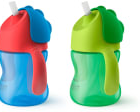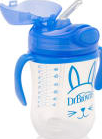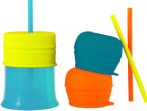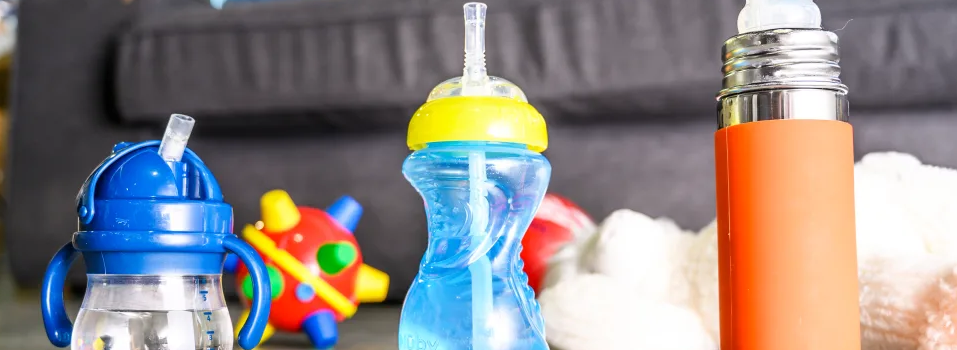
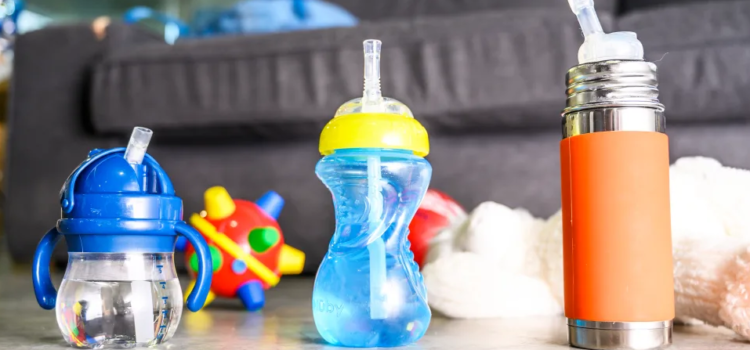
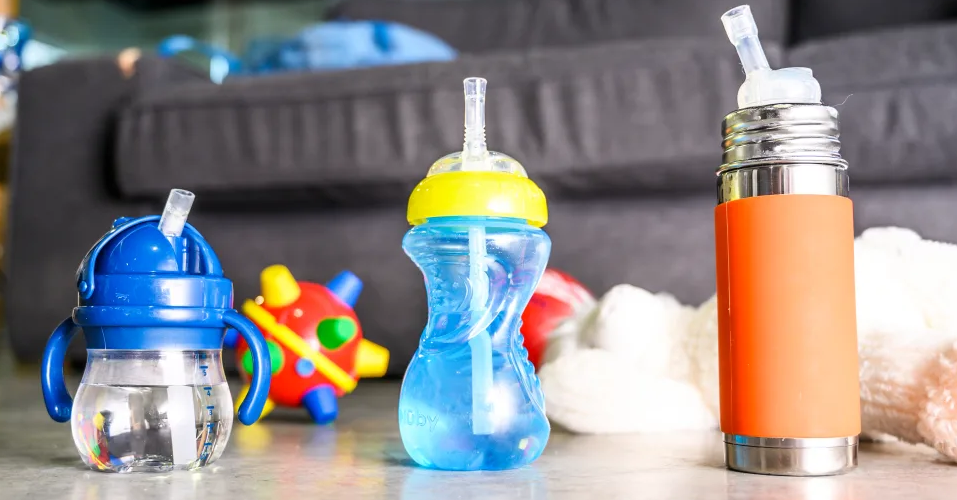
THE BEST STRAW CUPS FOR TODDLERS OF 2019
Choosing the right straw cup for your toddler might as well be an Olympic sport. As the mom of two kids, I know the costly and time-consuming search all too well. There are various straw cup models on the market, so how can you be sure which one is the absolute best for your toddler? If your little one is ready to transition from a bottle or sippy cup to a straw cup and you have no clue where to begin, welcome. You’ve come to the right place.
I spent roughly four weeks examining 12 popular straw cups for toddlers—with the help of my 15-month-old son, of course. The two biggest factors I took into consideration throughout the testing process were leakage and cleanliness. After nearly 30 days of testing, the very best straw cup for toddlers is the OXO Tot Transitions Straw Cup with Removable Handles (available at Amazon for $9.99). What makes this cup so great? The six-ounce straw cup is made from sturdy, durable plastic while still being lightweight enough for tiny hands to hold, it’s simple and easy to take apart for cleaning, and, most importantly, it doesn’t leak (yes, really).
However, the OXO Tot Transitions Straw Cup isn’t the only impressive straw cup for toddlers that we tested. Other brands we inspected offer useful features like insulation, bottle straps for when you’re on-the-go, and silicone bumpers to prevent damage to the bottom of the cup. Wondering which other models are worth it and which ones aren’t? Keep reading to find out what we love—and don’t love—about each straw cup.
Here are the 12 best straw cups for toddler’s we tested ranked, in order:
- OXO Tot Transitions Straw Cup with Removable Handles
- Nuby Clik-it FlexStraw Cup
- Pura Kiki Stainless Steel Insulated Straw Cup
- Philips Avent My Bendy Straw Cup
- Skip Hop Stainless Steel Little Kid Straw Bottle
- Thinkbaby Thinkster Ultra Polished Stainless Steel
- The First Years: Take & Toss Spill Proof Straw Cup
- Dr. Brown’s Baby’s First Straw Cup
- Thermos Funtainer
- Nuby Thirsty Kids Flip-it REFLEX
- Boon Snug Straw with Cup
- Munchkin Click Lock Any Angle Weighted 2 Piece Straw Cup
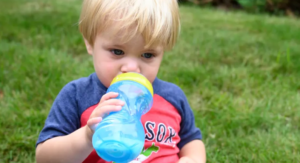
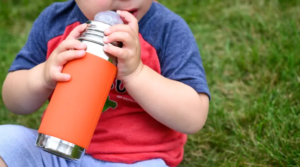
How We Tested
The Tester
Hi, I’m Rachel Murphy. But, most of the time, I’m better known as “mom” to my son, Arlo, age 15 months, and my daughter, Reese, age 6. Ever since I became pregnant with my daughter over six years ago, I’ve spent countless hours researching children’s products, searching for the best options for my family. So, rest assured you’re in good hands (because I don’t want a leaky straw cup any more than you do). When my son turned one earlier this year, his pediatrician advised us to ditch the bottle, bypass sippy cups altogether, and opt for a cup with a straw. I knew the routine well, having done this exact thing with my daughter nearly five years prior. But, given the large time gap, I was curious to see if there were any new or improved straw cups for toddlers. In my previous experience with toddler straw cups, one of the biggest design flaws I can remember is the leakage. So, this time around, I’m on a quest to find out which straw cup for my son is going to cause me the least amount of headaches and messes to clean up.
The Tests
My toddler and I spent the better part of July testing 12 different straw cups that are suitable for children between the ages of 12 months and 36 months old. To identify which cups to test, I researched the top straw cups from well-known kids companies like OXO, Boon, Skip Hop, and others, and combed through Amazon, looking for recommendations from other parents on well-rated straw cups for toddlers.
We didn’t take it easy on these cups, either. My son loves to throw things, particularly his bottle during mealtime. We tossed bottles full of milk and water across the room, dropped them from waist height onto hard tile floors, and shook each cup vigorously from side to side to see if any liquid (and, in some cases, how much liquid) escaped from the cup.
Cleaning is another pesky problem with toddler cups and an important factor in determining which of these straw cups for toddlers reigns supreme. There are so many tiny parts, especially with straw cups. Much like a water bottle you’d take to the gym, most of the straw cups we tested have a minimum of two straw pieces, so it’s not always as simple as tossing these bad boys right into your dishwasher. All but two of the cups required a bristle brush for a thorough cleaning. But, some of the cups do come with their own cleaning tool, so at least you don’t have to shell out extra cash for an additional product.
We took other essential details into consideration, too, like how easy it is to seal and unseal each straw cup, affordability, the construction of each bottle, portability and storage, and any special features.
What You Should Know About Straw Cups
Special cleaning tools may be required
If you’ve ever cleaned out your water bottle or maybe you have reusable straws at home, then you already know the importance of thoroughly cleaning the straw piece. Bits of food can get stuck on the interior of the straw and come up the next time you take a sip. The same can happen with straw cups for kids, that’s why it’s a good idea to keep a set of bristle brushes on hand. Some straw cups for toddlers that we tested included the cleaning device, while others did not. Even so, it’s good to have more than one at home in case it becomes lost or breaks.
Opt for a cup with a soft spout, if possible
Hard spouts may cause harm to the inside of a toddler’s mouth if they fall forward when drinking from the cup. For developing gums, it’s best to choose a softer spout that is less likely to cause damage in the event the child inserts the spout too quickly into their mouth or falls face down while holding the straw cup.
Straw cups are made from a variety of materials
When it comes to the design of the straw cup, you’ve got options. The cups we tested are primarily made from stainless steel or BPA-free plastic. You’ve probably seen the words “BPA-free” across several children’s products you’ve purchased over the years, so what does it mean? Bisphenol A, more commonly called BPA, is a chemical used to produce polycarbonate plastics and epoxy resins, according to the National Institute of Environmental Health Sciences. Although the Food and Drug Administration deems BPA as safe, the organization banned BPA materials from being used to make baby bottles and sippy cups in 2012 and 2013.
